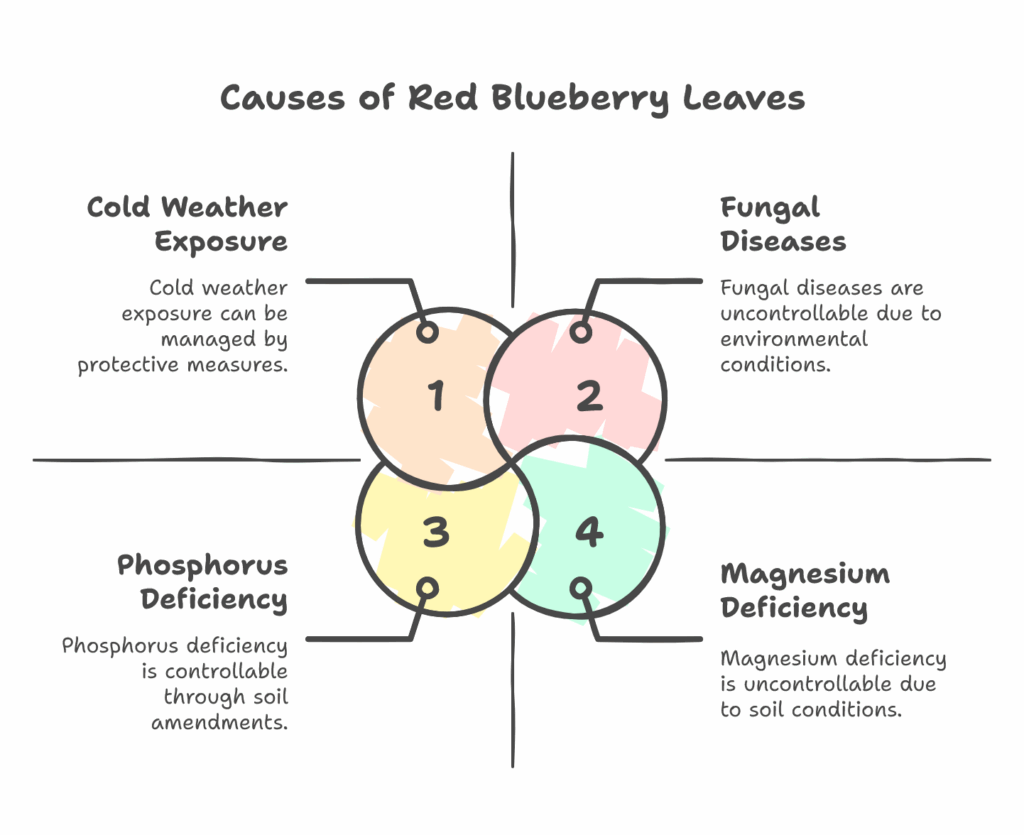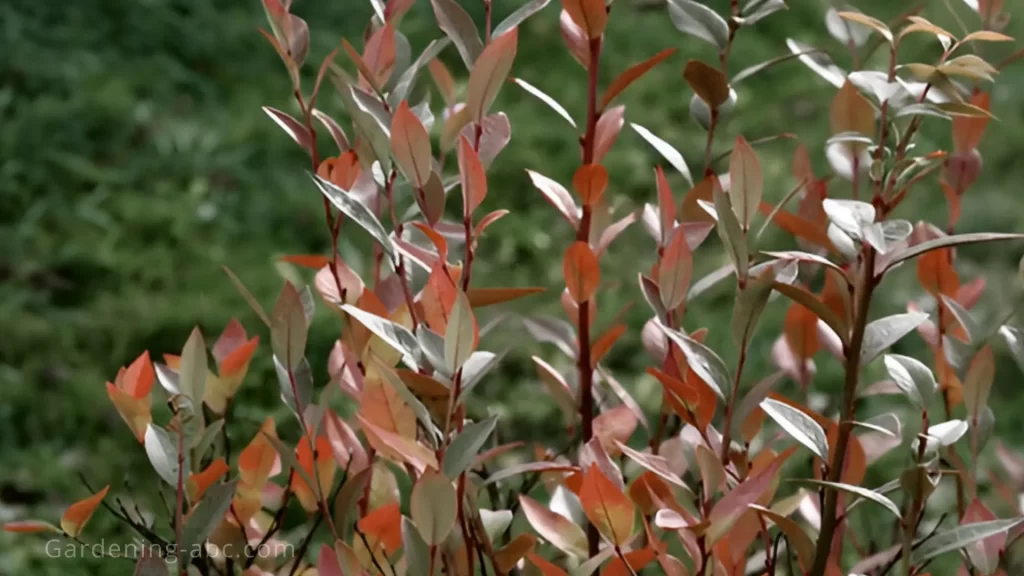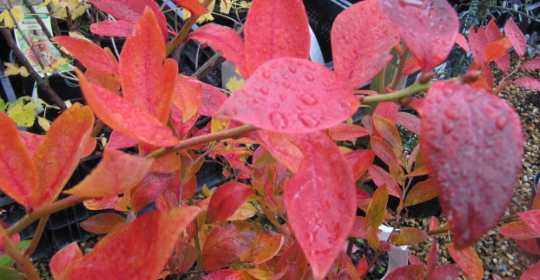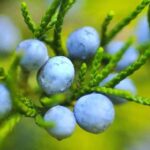We use affiliate links to run our site. When you buy through links on our site, we may earn an affiliate commission, without any added cost to you. Learn more
Blueberry bushes are attractive evergreens, but when their leaves start turning red, it could be a sign of some problems for the plant.
In some cases, a simple fertilizer application may be all that’s needed to restore the bush, but at other times, you may need a thorough inspection.
Determining why blueberry leaves are turning red is important for proper treatment. So in this post, I try to find out the answers to the most relevant question of why the leaves of a blueberry plant are turning red.
So let’s begin…
There are many different causes of color changes in blueberry leaves. Some are normal responses to environmental triggers, while others signal a problem with the plant. The best way to determine which case is occurring is to consider the symptoms of red leaves and recognize what may be causing them in your particular situation.
What Keeps Blueberry Leaves Green
Most plant leaves, including blueberries, stay green because of chlorophyll. Chlorophyll is important for plants as it is responsible for converting light into energy through photosynthesis.
This energy is used to make sugars in the plant that are necessary for growth as well as to keep the leaves green. Without chlorophyll, your blueberries would not be able to make food from light and carbon dioxide.
So it is crucial for blueberry leaves to remain green because it is directly linked to their survival. And if you find the leaves are turning red, you have to take immediate action or the plant will die quickly.
What Causes Blueberry Leaves to Turn Red?

Blueberry bushes have specific requirements for optimum growth and fruit production. A pH level between 4.5 and 5.5 is ideal, but low pH isn’t the only possible cause for blueberries’ leaves turning red.
Some of these factors can be controlled by the gardener while others cannot, such as weather and disease. If you are growing blueberries, here are some common causes of leaf discoloration and how to correct them.
Nutrient Deficiencies:
Chlorophyll is always being broken down and recreated in your plant’s cells, but without proper nutrition, this process can be interrupted.
Plants need certain nutrients to remain healthy and produce fruit. If they don’t get one or more of these nutrients, their leaves will turn red.
A common cause of red foliage in blueberries is nutrient deficiency. If a plant doesn’t have enough phosphorus or potassium in its soil and isn’t able to take up enough through its roots, its leaves will turn red.
Phosphorus Deficiency:
Phosphorus deficiency is one possible reason for blueberry leaves turning red or purple. This nutrient helps plants develop strong roots, stems, and flowers as well.
Phosphorus is one of the three most important nutrients for plant growth, along with nitrogen and potassium, so it makes sense that its absence could cause noticeable problems.
If your blueberries are suffering from a phosphorus deficiency, they will also exhibit other symptoms besides red leaves: stunted growth, purple stems and canes, leaf curling, bud necrosis (the death of tissue in buds), and flower loss.

Magnesium Deficiency:
This is another very common reason for red leaves in blueberries. Magnesium is vital for photosynthesis. This deficiency will first show up in younger leaves as the veins in your plant’s leaves turn red.
If left untreated, the entire plant’s leaves will yellow and eventually turn entirely red.
A lack of magnesium doesn’t kill the plant outright, but it can have a drastic effect on its appearance.
General Nutrient Deficiencies:
Not only Phosphorus, or Magnesium, the reddening of leaves can be due to deficiencies of other nutrients too. A blueberry plant needs lots of micronutrients as well to thrive. Any lack of those nutrients can also cause red leaves on the plant.
Diseases:
Red leaves on blueberries could be caused by one of several diseases, including fungal and bacterial diseases. The disease progresses through the season, infecting blossoms and fruit with blueish-gray lesions that eventually develop into reddish-purple spots.
Fungal Diseases:
The second most common reason for blueberry leaves turning red is because of leaf spot disease caused by fungi. This type of disease often occurs when there has been a lot of rainfall or if the weather has been humid for an extended period of time.
Phomopsis Twig Blight:
This is caused by the fungus Phomopsis vaccinii. Phomopsis twig blight causes leaves to turn brown and die. Reddening occurs when fungal spores germinate and produce their fruiting bodies on the surface of dead leaves.
The disease is most common in young plants, which have not yet started to produce fruit.
Powdery Mildew:
Powdery mildew infects the foliage of blueberry bushes in spring, causing leaves to wilt and turn brown from the edges inward during midsummer. When temperatures warm up, the leaves turn red, then drop off the bush.
Bacterial Disease:
Bacterial scorch causes blueberry leaves to turn purple-red on one side and yellow on the other side before they die. The disease most often affects older plants or those that have been recently pruned, because they are more susceptible to bacterial infections than young plants.


Exposed to Cold Weather:
Another reason for the reddening of leaves is that your blueberries are getting exposed to cold weather. This is different from your blueberries freezing.
In many cases, blueberry plants will undergo the natural process of their leaves turning red simply because of the turning of the seasons. You can expect the leaves to turn reddish-brown as fall comes.
This is a completely normal process and shouldn’t be a cause for alarm. Instead, take care to give your blueberry plants the adequate attention they need to survive through the winter for a productive, fruitful year ahead!
How To Stop Blueberry Leaves from Turning Red?
Once you find out the exact reason why are blueberry leaves are turning red, it’s time to apply the solutions. Here are some tips to prevent this from happening:


- The soil needs to be rich in organic material and well-drained so that the blueberry bushes can thrive. It’s a good idea to test your soil before you start planting, then add peat moss or compost if needed.
- Check the pH of the soil to make sure it is not too high for blueberry plants. A pH above 5.5 will cause a magnesium deficiency in blueberries. This deficiency can also appear as a yellowish discoloration between leaf veins that later turns red.
- If the soil is deficient in phosphorus, you can apply fertilizer to help give your blueberry bush what it needs to produce healthy flowers and fruits. There are also many natural alternatives to applying fertilizer to your soil, such as using coffee grounds.
- In order to help prevent and manage any future infections from occurring, consider making amendments to the soil if it’s infected so that it drains better. Additionally, choose a sunny location for planting — this will provide for better air circulation.
- To prevent bacterial diseases from affecting your blueberry bushes, prune off infected branches as soon as you notice symptoms and dispose of them immediately.
- Magnesium deficiencies can be corrected by applying Epsom salts to your soil every 2-3 weeks during the growing season (spring and summer). Apply 1/2 cup per mature plant or 1/3 cup per gallon of water to younger plants.
- 【4 in 1 function】This is a 4-in-1 multifunctional soil tester.Our soil tester fastly to measure…
- 【Large Screen & Backlight LCD Display】The Soil Tester uses a large LCD screen and white…
Conclusion:
Blueberry leaves turning red is a sign of stress, and it can be caused by various factors such as bacterial or fungal diseases, lack of water, or nutrient deficiencies.
In order for your bush to survive and thrive, you need to address the problem immediately.
By understanding the reasons behind why this happens, you can take steps to prevent it from happening in the future. Give your blueberry plants the care they need, and they will reward you with delicious fruit for years to come!
I hope this post was helpful to you. Here are some more helpful posts about growing blueberries. If you like the information, feel free to share it with others, too.
Amazon and the Amazon logo are trademarks of Amazon.com, Inc, or its affiliates.


Hi there! My name is Prasenjit and I’m an avid gardener and someone who has grown a passion for growing plants. From my hands-on experience, I have learned what works and what doesn’t. Here I share everything I have learned.



![Organic Plant Magic - Truly Organic™ Fast-Acting Water Soluble Plant Food - All-Purpose Fertilizer Concentrate for Flower, Vegetable, Herb, Fruit Tree, Garden & Indoor Houseplants [One 1/2 lb Bag]](https://m.media-amazon.com/images/I/510yaUo8LZL._SL160_.jpg)

![Organic Plant Magic - Truly Organic™ Fast-Acting Soluble Plant Food: All-Purpose Fertilizer Concentrate for All Flower Vegetable Herb Fruit Tree Shrub Container Garden & House Plants [One 1 lb Bag]](https://m.media-amazon.com/images/I/51DFsIwEBCL._SL160_.jpg)
